|
CATES Center for Advanced Transportation and Energy Solutions |
||||
|
"Research, Educate, Integrate, and Accelerate" |
||||
|
Beyond Oil 2012: Conference Summary Report |
||||
| Videos from Beyond Oil Opening remarks from Conference Chairman Steve Marshall Video recording of Beyond Oil Conference, thanks to OneToTheWorld.com and Seattle Center Foundation.
Access to specific presentations
(slides on split screen) now available via "Content on Demand" tab below
viewing window in the conference video: K.C. Golden, Climate Solutions
Sec. of Transportation
Gordon Feller, Cisco
Steve Underwood, U. of Michigan Front page report in The Seattle Times on Beyond Oil by Transportation Reporter Mike Lindblom Follow up on Beyond Oil by conservation-minded law firm Graham & Dunn Report on Beyond Oil by Mallory Smith in The Futurist Blog Open letter to Governor-Elect Jay Inslee: What the Next Governor Can Do to Transform Transportation Daily computer-generated compilation of news stories "Noted by CATES" as crowd-sourced from Twitter. Short overview of the integrated assessment CATES' white paper for Governor-Elect Inslee
|
|
CATES Conference Designers Steve Marshall, Executive
Director John Niles, Research
Director Conference Sponsors Western Washington Clean Cities Cascadia Center for Regional Development Washington Clean Technology Alliance American Automobile Association Additional Supporters of CATES Graham Environmental Sustainability Institute at University of Michigan Connected Vehicle Proving Center at University of Michigan - Dearborn Background Documents Program and presentations from the TRB Road Vehicle Automation Workshop, July 2012 (pdf) Presentations from USDOT's three-day September 2012 Intelligent Transportation System Industry Forum and Public Meeting in Chicago, "Connected Vehicles: Moving From Research Towards Implementation" Partnership for Sustainable Communities, initiated by HUD, DOT, and EPA Federal agencies Idaho National Laboratory Advanced Vehicle Testing Activity, Plug-in Hybrid Electric Vehicles Insights About Telematics (electronic newsletter) Thurston Regional Planning Council Plan for Sustainable Development The U.S. DOT Transportation and Climate Change Clearinghouse White paper from KPMG, "Self-Driving Cars – The Next Revolution" Electrification Roadmap and Fleet Electrification Roadmap by Electrification Coalition.
|
||
Center for Advanced Transportation and Energy Solutions -- CATES -- is a new non-profit research & development organization based in Western Washington State. Our Beyond Oil Conference on September 7, 2012 was part of the 50th anniversary celebration of the 1962 Seattle World’s Fair, a series of public events called "The Next 50." Click for the list of Beyond Oil speakers and their biographies.
Recordings of all presentations are here in streamed split screen video showing both the speaker and any presentation slides. Then use the "Content on Demand" tab to access particular speakers' presentations. Separately, in addition, some of the presentation slides are available in pdf further down on this page, left hand side.
The original World’s Fair, which came at the dawn of the
commercial
jet aviation age, the space age, and the global communications
revolution, emphasized
CATES regarded Beyond Oil as the kick-off event in an integrated assessment of the potential for innovative and disruptive applications of technology in personal vehicles. Just as vehicle technology in the early 20th century replaced the horse within a generation, what are the emerging, innovative, and disruptive mobility technologies of today that are likely to emerge over the next few decades? And how do we respond to these technologies in public policies to help solve major problems with the dominant transportation mode of motor vehicles, very much affecting the sustainability and livability of our urban communities? Our integrated assessment, funded by the Graham Environmental Sustainability Institute at University of Michigan, and led by the Connected Vehicle Proving Center at the Dearborn campus of the same university, is dealing with five interrelated problems of motor vehicle road transportation. The first problem is that we depend too much on a single transportation fuel. Oil fuels 97 percent of U.S. transportation, is half of our trade imbalance at a billion dollars a day, and is the largest Washington State source of greenhouse gas emissions and urban pollution. Oil is also a cause of global conflict. Just the U.S. military cost to protect world oil shipping lanes exceeds $80 billion a year. In his keynote address, Amory Lovins of Rocky Mountain Institute summarized his most recent book, Reinventing Fire, including descriptions of future electric personal vehicles his team has designed for easy manufacturing with dramatic weight introductions based on carbon fiber materials used first in the aircraft industry. As described in the book's Transportation Executive Summary, transportation can be made oil-free by 2050: "Superefficient autos, trucks, and planes, far more productively used, would need three-fourths less fuel, no oil, and less lifecycle cost. Yet they could provide greatly enhanced personal mobility and freight services with uncompromised convenience, safety, and performance."
Our lunch keynoter, Bob Lutz, author of the best-selling
book
Car Guys vs Bean Counters and instrumental in the creation
of the plug-in Chevrolet Volt, could not have been more optimistic about
the long-run inevitability of electric power in cars, but he was also firm
in asserting Charlie Allcock from the private utility Portland General Electric described the cooperative public-private learning process that is necessary to create an electric vehicle eco-system in an urban area, and along the interstate highways connecting cities. Providing an important example, Washington State Secretary of Transportation Paula Hammond described the West Coast Electric Highway, "the nation’s most extensive, multi-state network of electric-vehicle, fast charge stations. The network currently spans 585 miles through Washington and Oregon along Interstate 5 from Canada to California with fast charging stations every 20 to 35 miles." Commissioner Phil Jones of the Washington State Utilities and Transportation Commission -- and since elected President of the National Association of Regulatory Utility Commissioners -- explained how electric utility regulatory requirements could in the future raise some complications for utilities supplying electricity to cars, but not so far. Unlike California, there is no regulatory involvement in charging stations in Washington State, and he, along with Charlie Allcock, sees no immediate impact on grid capacity from EV electric power consumption. For the foreseeable future, most vehicle charging is expected to occur overnight when there is ample electric power. K.C. Golden from Climate Solutions pointed out the progress in cleaner, oil-free motoring being made in the nation with higher U.S. vehicle fuel efficiency standards, and around the Puget Sound region, illustrated in a short video released just after the conference. But he challenged Conference participants to do even more, to build on clean hydroelectric power from Bonneville Power Administration. For example, businesses, city government, and citizens in Bellevue, Washington have led the way in supporting the advent of electric vehicles, providing charging stations in public locations and introducing EVs into its motor vehicle fleet to support municipal work while staying oil-free. "Driving the EVolution," a video in the "Solutions Story" series from Climate Solutions, describes all this and more:
The second problem is the huge and unacceptable cost of traffic accidents. In the United States, traffic accidents claimed 32,885 lives in 2010, with over two million people injured. Worldwide the motor vehicle death toll is over one million. Vehicle accidents are the leading cause of injury death among children 10 to 19 years old and the sixth leading preventable cause of death in the United States. The cost of vehicle deaths and injuries in the U.S. exceeds $70 billion a year. Amory Lovins illustrated with a car-crash video in his presentation how light, carbon fiber cars can protect vehicle occupants. Steve Underwood from the Connected Vehicle Proving Center described the new automated capabilities of cars that can evolve into a personal transportation system where vehicle accidents are as rare as airline crashes. He showed the video of the self-driving Google car taking a blind man on a trip for lunch and a stop at the dry cleaners. The third problem is traffic congestion, which wastes time and fuel, damaging the economy and the environment. Urban pollution and greenhouse gas emissions increase sharply in stop-and-go traffic. According to the Beyond Oil presentation by INRIX, in 2011 U.S. drivers wasted 1.9 billion gallons of fuel while sitting idle in traffic, and the delay of people and goods cost the US economy more than $100 billion. The cost of adverse health consequences from pollution related to urban congestion is also high.
Amory Lovins, and then later in the program, Shelly Poticha from HUD, pointed out
the potential for less driving through Smart Growth principles shaping the
density and pattern of land use. A fourth problem is the underutilization of public transportation. The percentage of daily trips on public transit has declined over the past few decades. Changing work and family patterns mean commuters need more flexible transit options and scheduling tools to meet their changing work patterns. The energy efficiency and emission reduction qualities of public transit are likely over the course of decades to become less compelling when electric vehicles become ubiquitous, even as the space saving characteristics of buses and trains for human transit remain compelling. In the meantime, King County Deputy Executive Fred Jarrett and Seattle City Councilman Tom Rasmussen described electric propulsion as the near-term future of bus transit. On a related point, Bob Lutz, John Boesel of CalStart, and Corey Clothier of the U.S. Army Tank Automotive Research Development and Engineering Center made clear in their presentations that fuel efficiency and automation applied every bit as much to large and small trucks as it does to personal vehicles. The prospect of automated, driverless taxis -- robo-cabs -- is a possibility for the future of urban transportation considering the information management capabilities described by INRIX, Verizon, and Cisco during Beyond Oil presentations. A fifth problem, becoming more realized every day, is the global climate crisis, brought on by human-generated greenhouse gases (GHG), typified by carbon dioxide. The public policy response to GHG was mentioned by many speakers at the conference, including K.C. Golden, and Washington State Public Utility Commissioner Phil Jones, who reminded participants that Greenhouse Gas reduction is a statutory goal of the State of Washington. Powering large and small vehicles with electricity from Washington State's hydroelectric grid came across at the conference as a best way for GHG emission goals to be met.
In summary, the Beyond Oil conference addressed the emerging vehicle and information technologies that can help solve the
five named
transportation problems and at the same time advance the public policy
goals of Note: This report is a draft document subject to revision. If you attended the Beyond Oil Conference on September 7, 2012 and were impressed with something you heard, let us know about it so we can consider modifying the above description to reflect what you noticed. Email to feedback@aboutcates.org.
|
||||
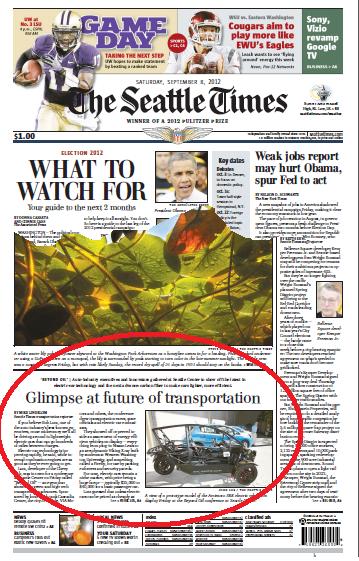
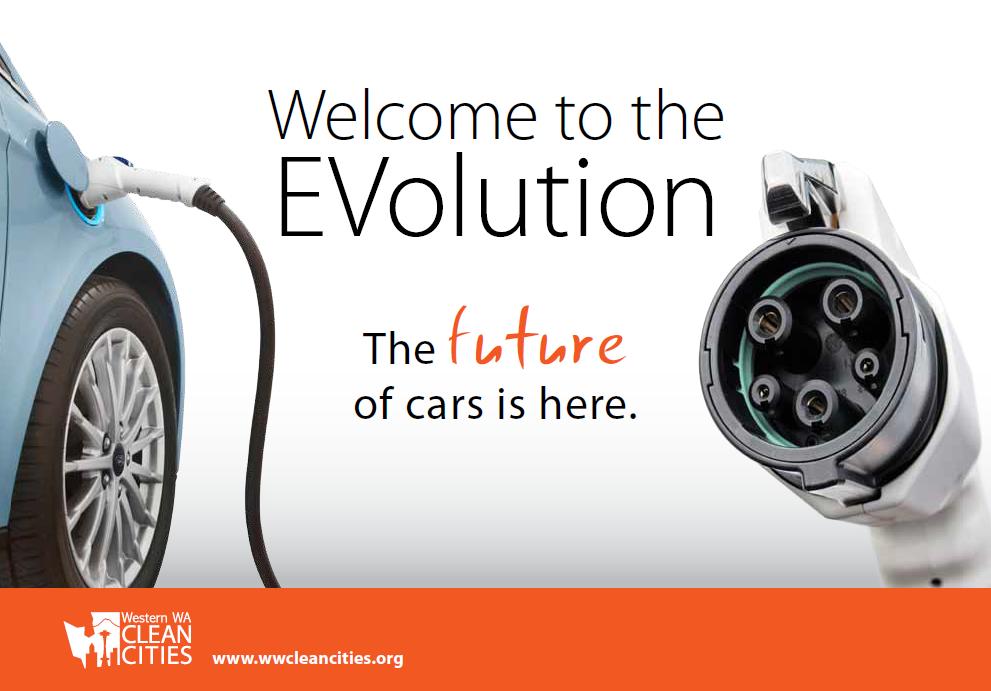
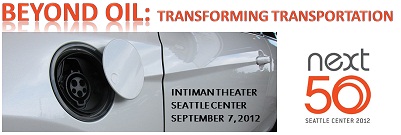
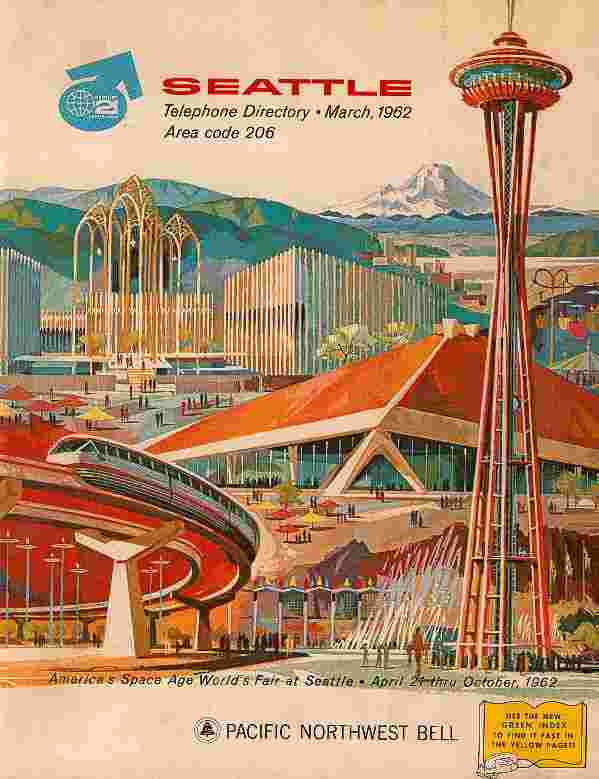 science, technology and innovation. Many of those
who attended, including Bill Gates, Paul
Allen and the McCaw brothers, were later part of a wave of innovation in
personal computers, the Internet, and
telecommunications that transformed the world. So it is fitting that this
conference looked to the future of personal transportation over the next 50 years.
science, technology and innovation. Many of those
who attended, including Bill Gates, Paul
Allen and the McCaw brothers, were later part of a wave of innovation in
personal computers, the Internet, and
telecommunications that transformed the world. So it is fitting that this
conference looked to the future of personal transportation over the next 50 years.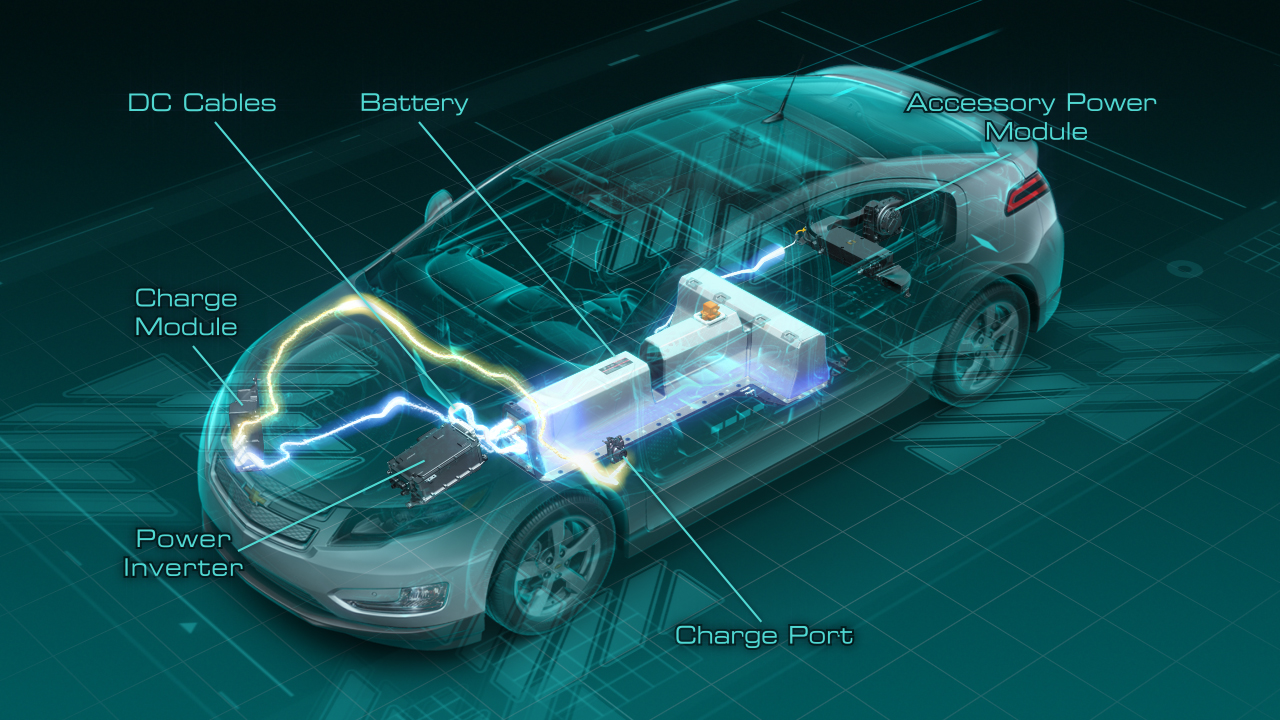 that large-scale consumer embrace of plug-in EVs would only
come when the short-term economics of purchase price compared to operating
savings from fuel efficiency were advantageous.
that large-scale consumer embrace of plug-in EVs would only
come when the short-term economics of purchase price compared to operating
savings from fuel efficiency were advantageous.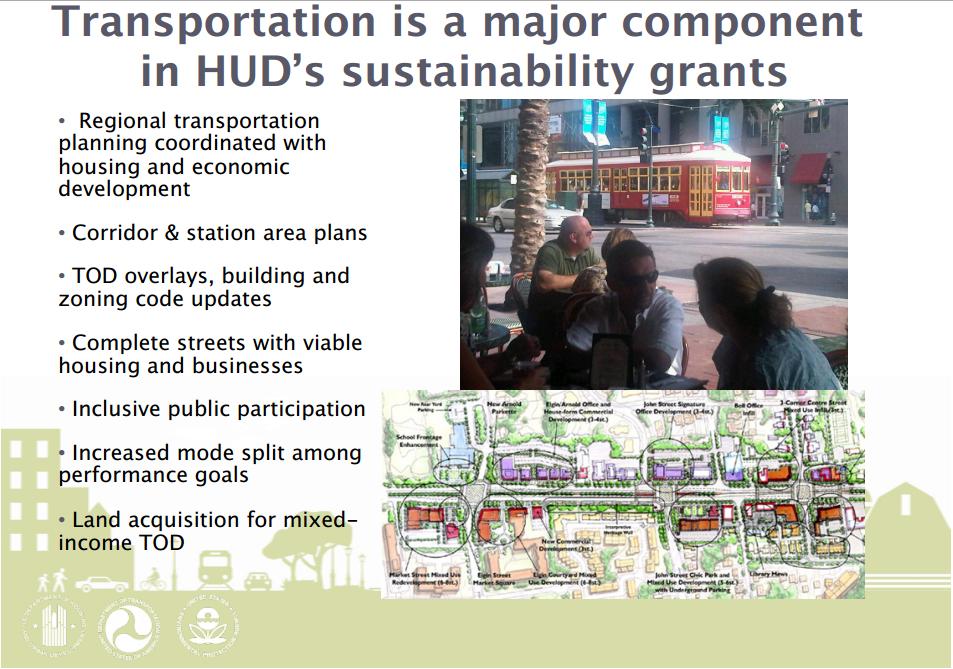 CATES is making sure that its scenarios
for future personal vehicles are compatible with Smart Growth land use.
Later in the Beyond Oil program, the connected and automated vehicle
systems described by representatives from Cisco, Airbiquity, Verizon,
INRIX, and the U.S. Army suggested great potential for smoothing out
traffic flows by connecting drivers and vehicles with information on times
and places to avoid in the short run, and by providing automated vehicle
control protocols in the longer run. As automated vehicle control
expands, a large increase in the vehicle flow capacity of limited access
roads is likely to be possible.
CATES is making sure that its scenarios
for future personal vehicles are compatible with Smart Growth land use.
Later in the Beyond Oil program, the connected and automated vehicle
systems described by representatives from Cisco, Airbiquity, Verizon,
INRIX, and the U.S. Army suggested great potential for smoothing out
traffic flows by connecting drivers and vehicles with information on times
and places to avoid in the short run, and by providing automated vehicle
control protocols in the longer run. As automated vehicle control
expands, a large increase in the vehicle flow capacity of limited access
roads is likely to be possible.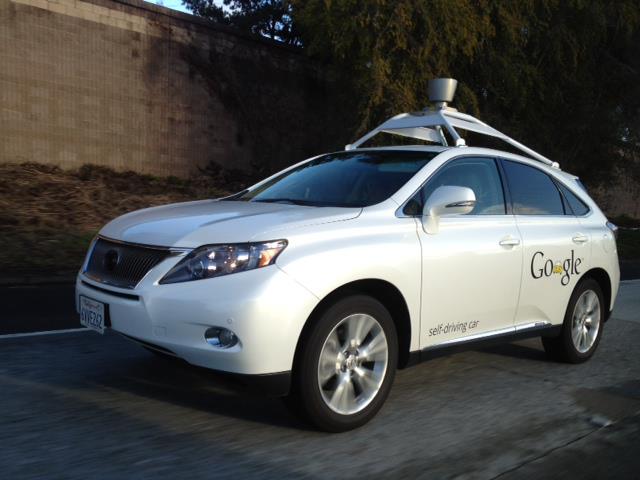 livability and sustainability
being pursued by Federal, state, and local governments. The
conference panels provided significant introductory information --
available by clicking links on this summary page -- on the prospects
of smart, connected, increasingly automated electric and alternative fuel
vehicles that also can link to and even be part of advanced
public transportation networks. The 2012 Beyond Oil Conference provided
views of a future for personal mobility without oil, without accidents,
without pollution, and without congestion!
livability and sustainability
being pursued by Federal, state, and local governments. The
conference panels provided significant introductory information --
available by clicking links on this summary page -- on the prospects
of smart, connected, increasingly automated electric and alternative fuel
vehicles that also can link to and even be part of advanced
public transportation networks. The 2012 Beyond Oil Conference provided
views of a future for personal mobility without oil, without accidents,
without pollution, and without congestion!